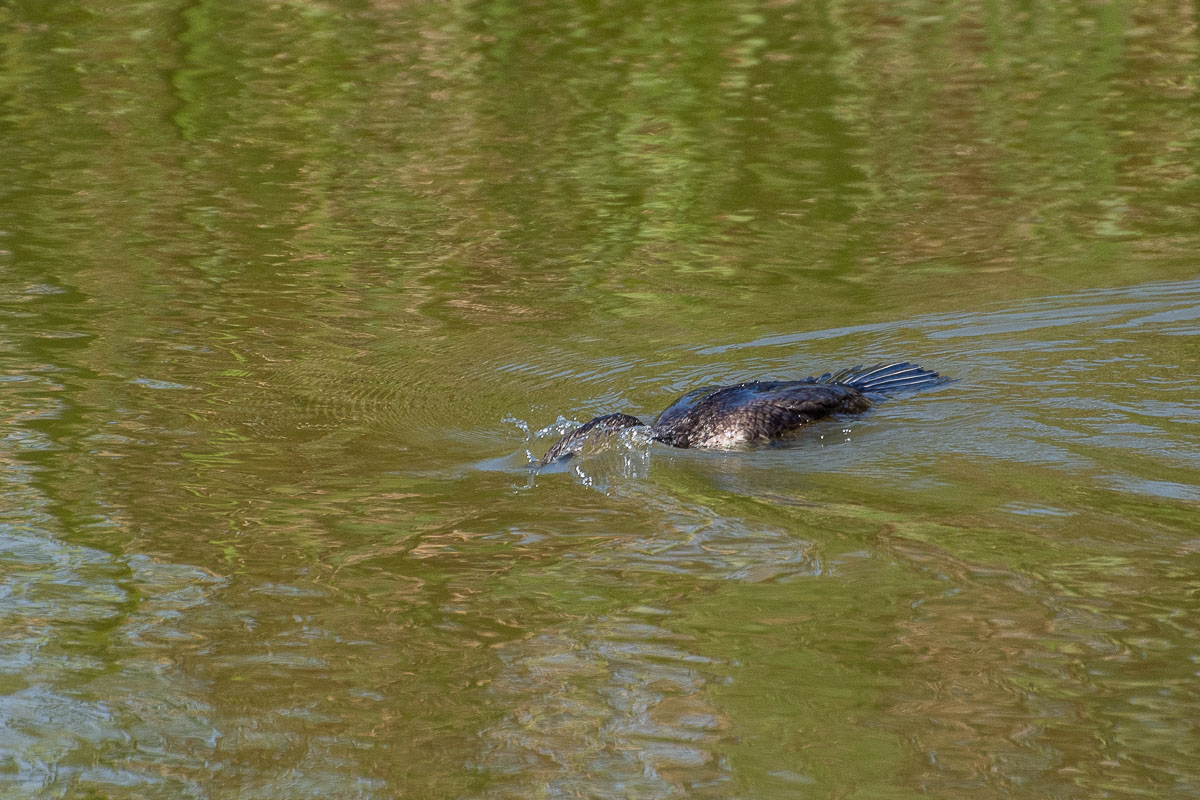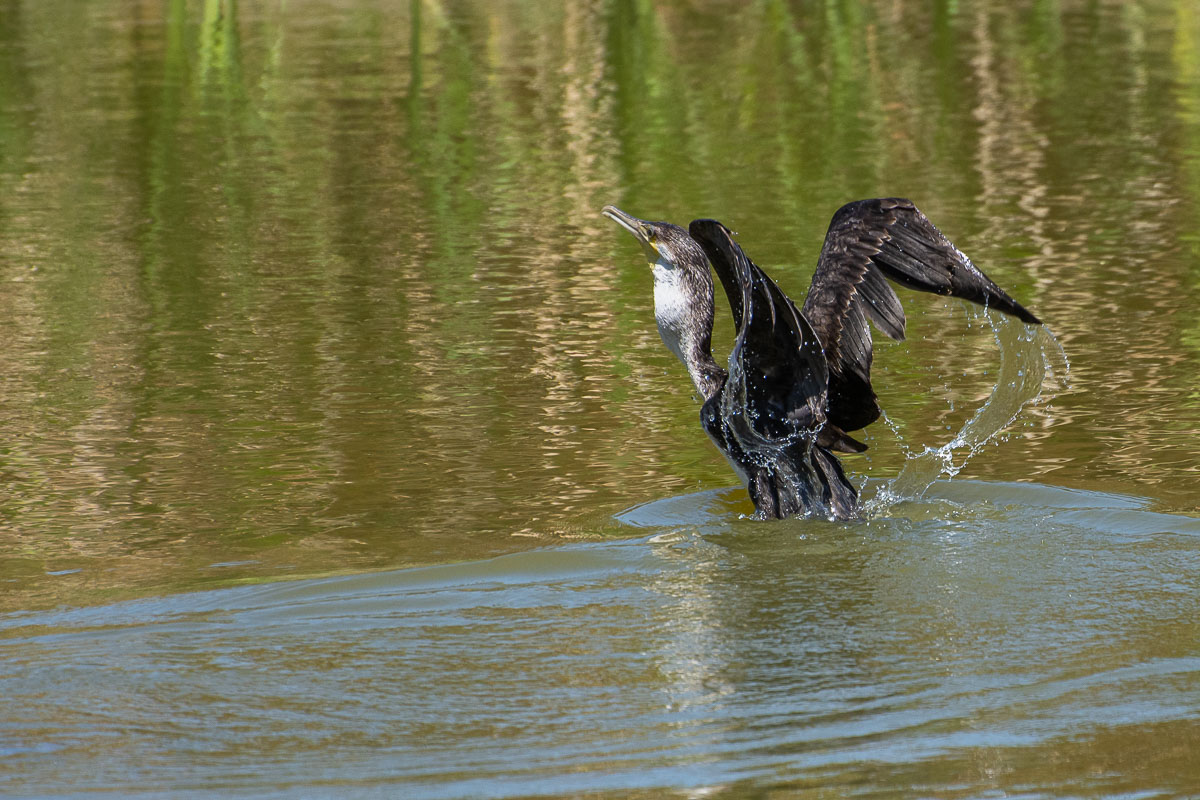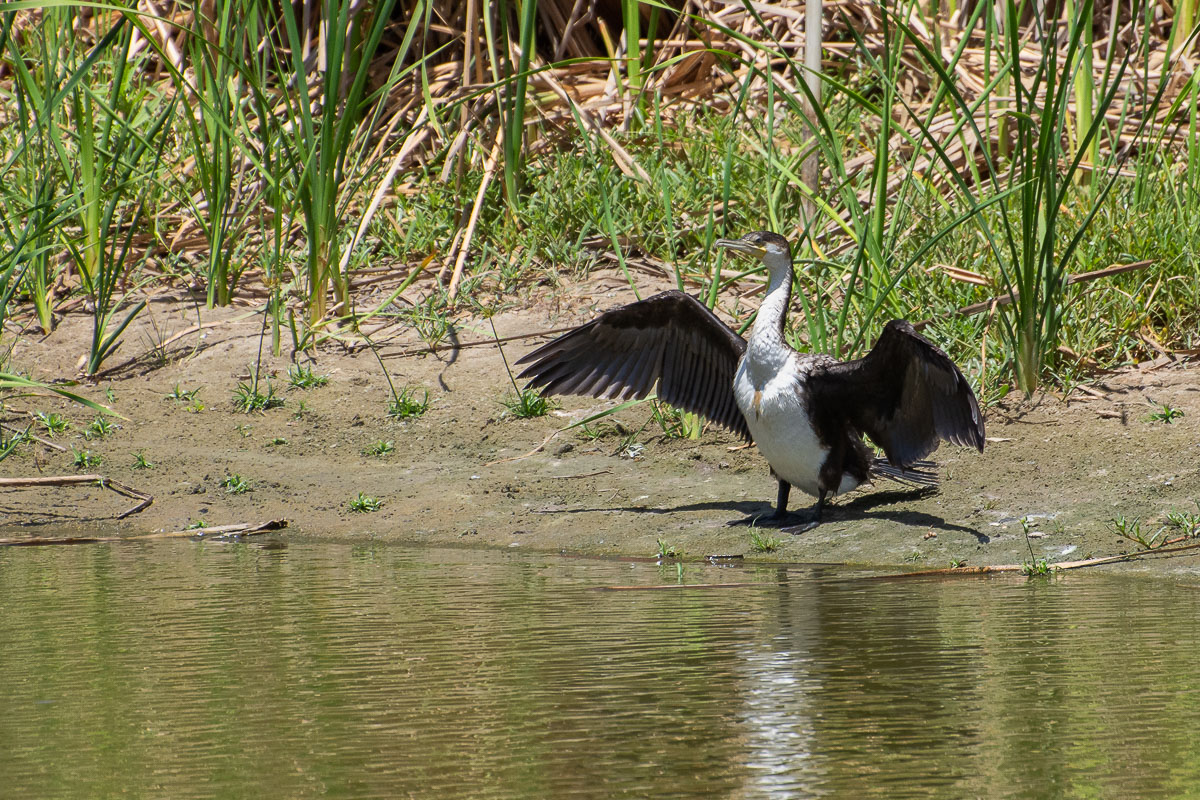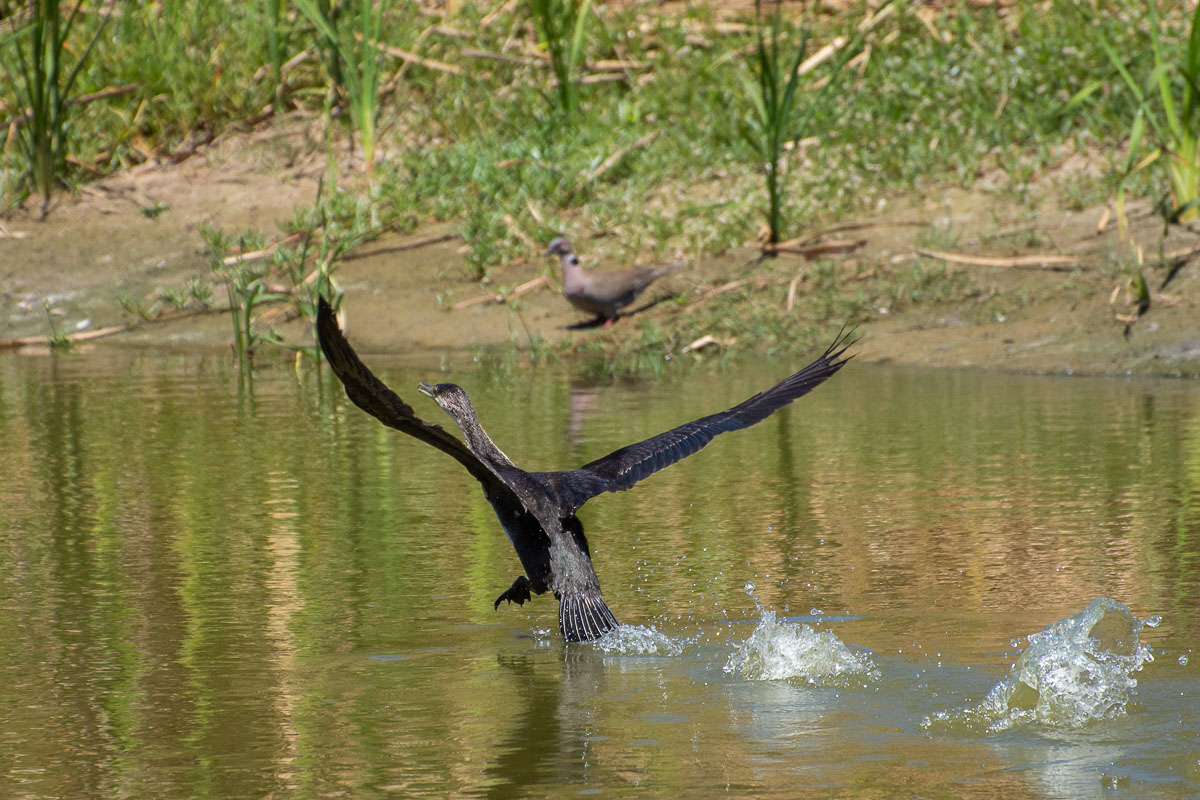The White-breasted Cormorant, Phalacrocorax carbo lucidus, is variously treated as either a regional variant of the Great Cormorant, Phalacrocorax carbo, or as a separate species. It is found along the coasts and inland waters of sub-Saharan Africa. With its distinctive black and white plumage and impressive diving skills, it is a fascinating bird that is highly adapted to life on the water.
Appearance and Characteristics
The White-breasted Cormorant is a large bird, measuring around 80-100cm in length and weighing between 2-3kg. It has a distinctive black and white plumage, with a white breast and belly and black wings and back. The bird has a long, hooked bill that is perfect for catching fish, and webbed feet that allow it to swim and dive with ease.
First up we see one heading down to grab a meal…

One of the most interesting features of the White-breasted Cormorant is its ability to regulate its buoyancy while swimming and diving. The bird has a specialized gland at the base of its tail that secretes oil, which the bird spreads over its feathers to make them more waterproof. This allows the bird to dive deeper and stay underwater for longer periods of time than many other aquatic birds.
Habitat and Distribution
The White-breasted Cormorant is found along the coasts and inland waters of Africa, from South Africa to Kenya. The bird is most commonly found near rocky coasts and estuaries, where it can find an abundant supply of fish and other aquatic prey. It is also known to inhabit inland waterways, such as rivers and lakes.
Diet and Behaviour
The White-breasted Cormorant is a skilled hunter, feeding mainly on fish, but also on crustaceans, mollusks, and other aquatic prey. The bird hunts by diving underwater and using its powerful legs and webbed feet to propel itself through the water in pursuit of its prey. Once it catches a fish, the bird will bring it to the surface and toss it into the air to swallow it whole.
It is not long before he is gorging himself on a fish…

The White-breasted Cormorant is also known for its social behavior, often gathering in large flocks on rocky outcroppings or sandbars. The birds will preen each other’s feathers and engage in elaborate courtship displays during the breeding season.
Conservation Status
The White-breasted Cormorant is not currently considered to be a species at risk, with populations stable or increasing in many areas. However, like many aquatic birds, the bird’s habitat is under threat from human activities, such as overfishing and pollution. Additionally, the bird may be impacted by oil spills or other environmental disasters.
All that remains is to dry those wings and catch a few rays…

I love the way they run across the water to take off…

This where I saw the White-breasted Cormorant. There is a small lagoon in front of the Calypso Restaurant (good food) and I also saw herons, egrets, Caspian Terns, Black Kites, Harrier Hawks, Pied Kingfishers, monkeys and also a few crocodiles.